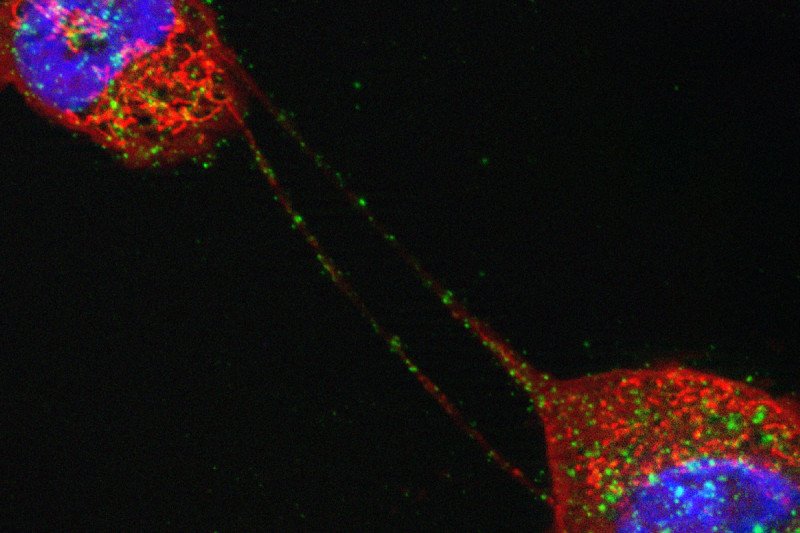
Memorial Sloan Kettering researchers have discovered a way that cancer cells may be able to exchange information. It involves the establishment of long bridges between cells called tunneling nanotubes, which facilitate cell-to-cell communication. The phenomenon was observed in mesothelioma and advanced lung cancer, which are aggressive diseases.
While other scientists have studied nanotubes for their ability to spread infection or inflammation between nerve and immune cells, the current research focused on cancer cells, including tumor cells isolated from people treated at Memorial Sloan Kettering.
“The identification of tunneling nanotubes might lead to a better understanding of the biology of mesothelioma and advanced lung cancer, and possibly other cancers as well,” explains Emil Lou, a former clinical and postdoctoral fellow at Memorial Sloan Kettering who conducted the research together with cell biologist and senior author Malcolm Moore, and other colleagues. Dr. Lou currently treats patients and performs research at the University of Minnesota.
Bridging Cancer Cells
In the above image, two cancer cells were stained with fluorescent dyes to identify the cells’ mitochondria (in red). The mitochondria — small cell compartments, or organelles, that are important for energy production — move through a tunneling nanotube, which connects two cells located far apart.
The team found that the movement of mitochondria and other molecules across tunneling nanotubes allows cancer cells to exchange information.
The work was performed in collaboration with the Molecular Cytology Core Facility, which is headed by Katia Manova-Todorova. It was published earlier this year in the journal PLoS One and discussed in an article addendum in the July/August issue of Communicative & Integrative Biology.
Exploring Intercellular Communication to Find New Drug Targets
Dr. Moore’s team is now studying how tunneling nanotubes form, and their potential role in the growth and spread of cancer cells. The scientists have expanded their research of nanotubes to ovarian cancer, where they have shown that nanotubes can connect cancer stem cells.
“Our labs are investigating whether blocking the cellular communication via nanotubes will lead to the identification of new targets for cancer therapy,” Dr. Lou explains.
Dr. Moore adds, “It is our hope that future drugs designed to interrupt cancer cells from communicating via nanotubes could help bring us closer to a variety of new treatment options for patients with aggressive cancers.”

